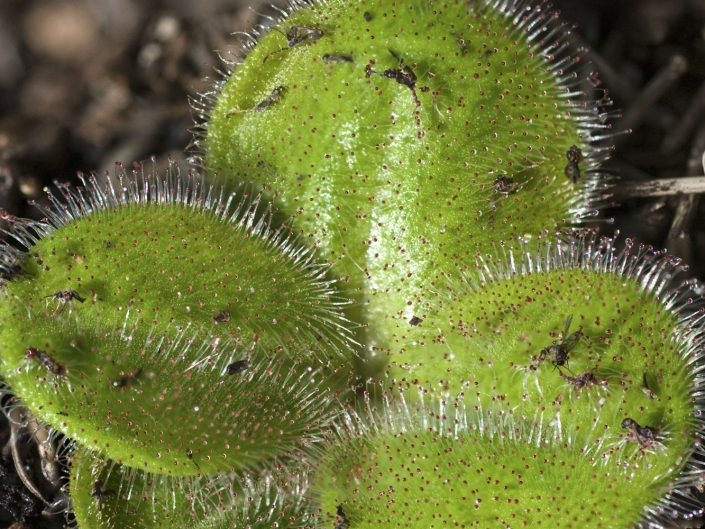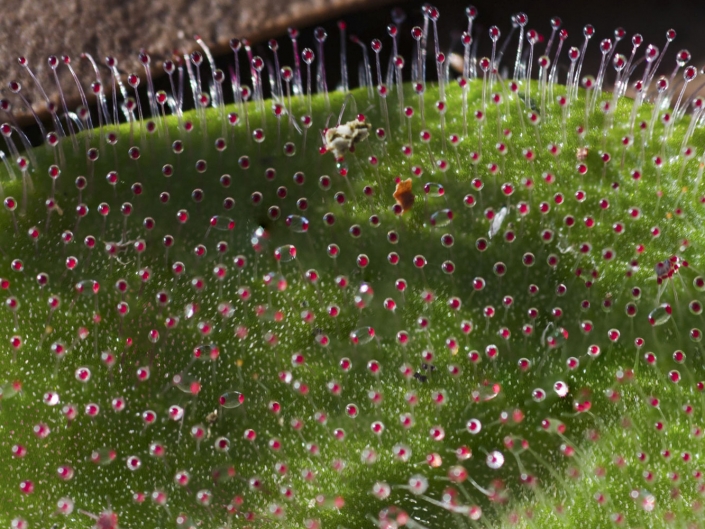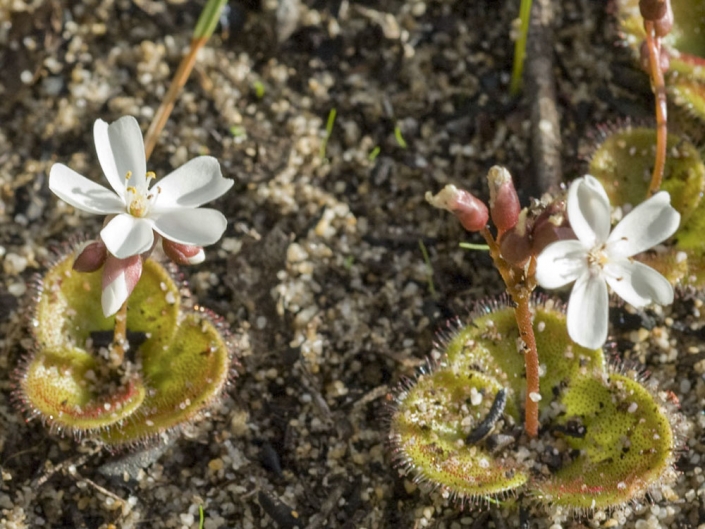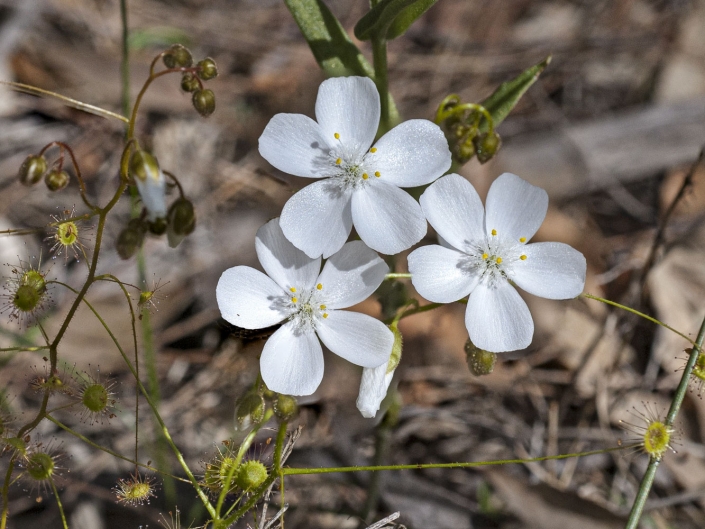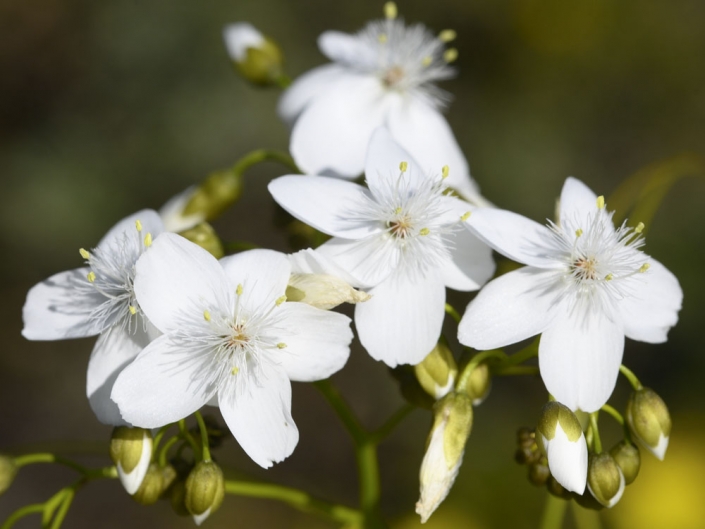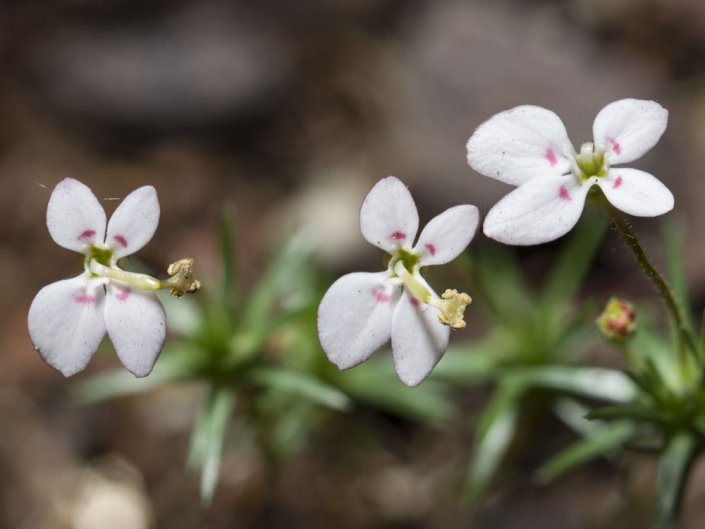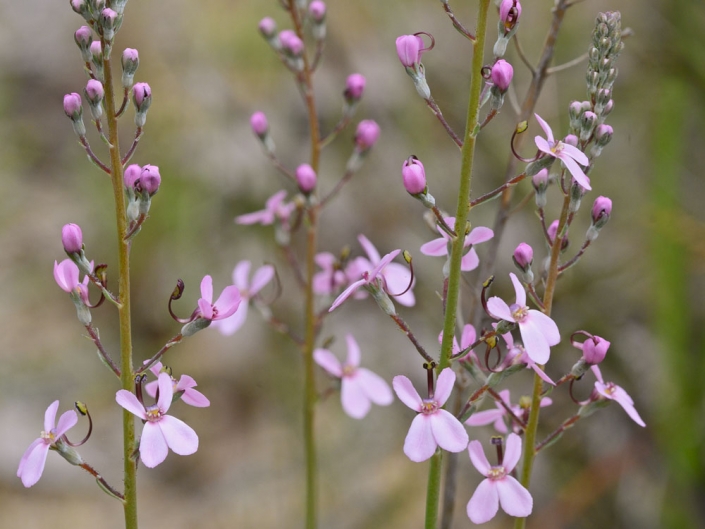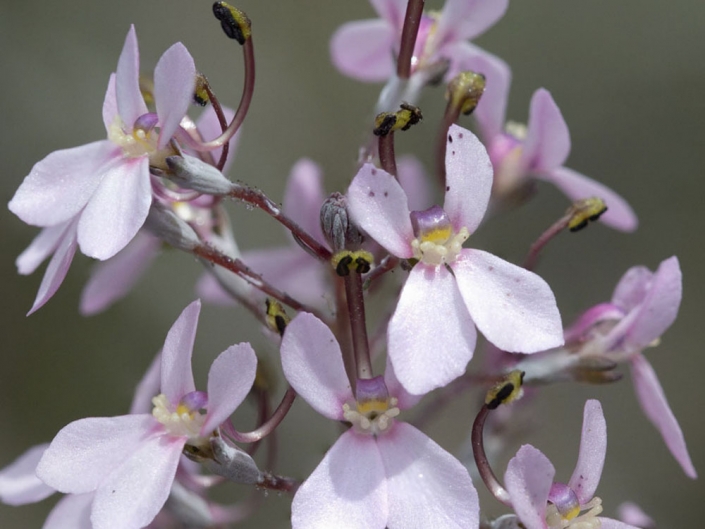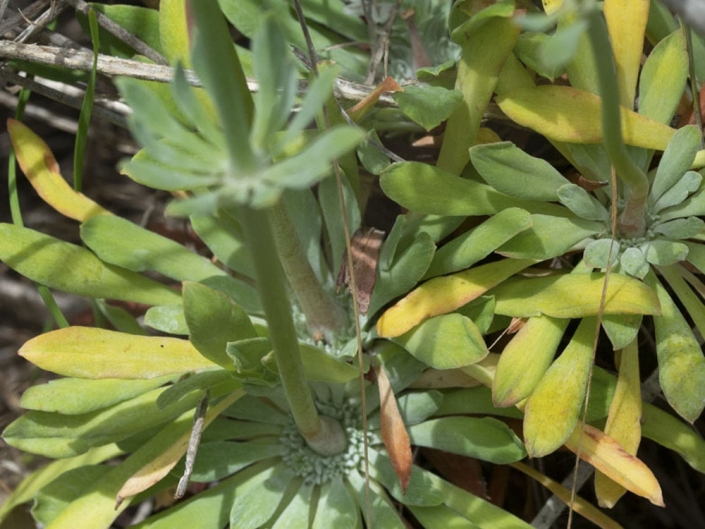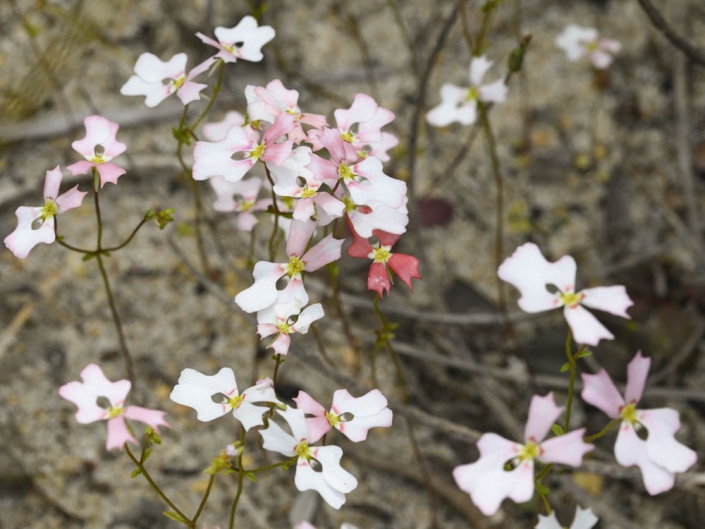Point of Interest 10: Wildflowers in Burnt Areas
This area is still recovering from a major fire in 2019. It is banksia woodland with widely scattered trees with many balgas, flowering shrubs and herbs. Wildflowers here include sundews, triggerplants and flowering shrubs, especially peas. Carousel Spider Orchids are uncommon on the edge of the track.
Common Wildflowers
Winter – Leucopogon (Styphelia propinqua), Daviesia species, Red Ink Sundews, sedges
Spring – Vanilla lily (Sowerbaea laxiflora), Marno, Bacon & Eggs (Gastrolobium capitatum), sundews, Milkmaids, Swan River Myrtle, Carousel Spider Orchids, climbing sundews
Late Spring & Summer – Jarrah, Candle Banksia
Focus Topic 21. Sundews
Warwick Bushland has five species of carnivorous plants in the sundew family, but only three are found on this trail. These survive over summer as bulbs and emerge in the autumn or winter. Red-ink sundew (Drosera erythrorhiza) emerges in autumn and has large groups of prostrate leaf rosettes. It flowers in autumn before leaves emerge, especially after fire. and has wide rosettes of green or red-coloured leaves covered in sticky hairs. These hairs trap small invertebrates which are digested to provide nutrients, as shown below. A pygmy sundew (Drosera micrantha) also has rosettes of leaves but is very hard to spot since they are only about 1 cm wide with tiny white flowers on a curved stalk. Climbing sundews have showy heads of flowers on top of a tall, thin, climbing stem bearing sticky leaves that act as tendrils. The commonest climbing species Pale Rainbow (Drosera pallida) has white flowers in winter and often climbs through shrubs. You may also see Pink Rainbow (Drosera drummondii) which flowers in spring. They are called rainbows because of the way their glandular hairs refract light, especially early or late in the day.
Focus Topic 22. Triggerplants
Several species of trigger plants can be found here. The most common is Coastal Pagoda Triggerplant (Stylidium neurophyllum), which has whorls of leaves and beautiful purple spikes of flowers in late spring. The creeping triggerplant (Stylidium repens) is very common but often overlooked as it produces numerous small flowers following rain at any time of the year. Book-leaf Triggerplant (Stylidium calcaratum) is a very small annual that carpets the ground in some areas. These have flowers with opposing petals that close together like a book at night.
Triggerplants have amazing flowers with a hammer-like structure that springs down on insects to transfer pollen. You may see this unique pollination mechanism in action if you watch insects visiting these flowers patiently.






